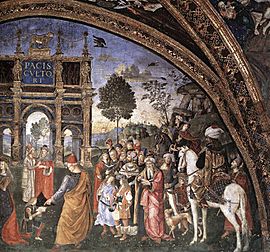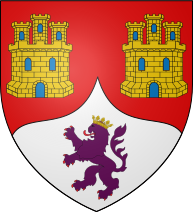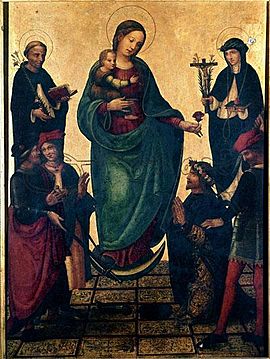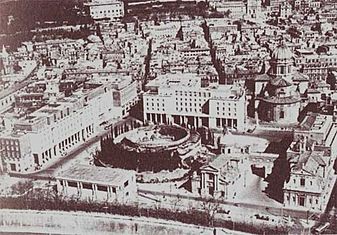Giovanni Borgia, 2nd Duke of Gandía facts for kids
Quick facts for kids
Giovanni Borgia
|
|
|---|---|
| Duke of Gandía | |
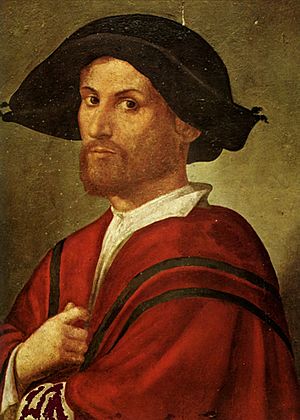
Alleged portrait of Giovanni Borgia
|
|
| Reign | 1488–1497 |
| Born | c. 1476 Italy |
| Died | 14 June 1497 (aged 20–21) Rome |
| Noble family | Borgia |
| Spouse(s) | Maria Enriquez de Luna |
| Issue | Juan de Borja y Enriquez, 3rd Duke of Gandía Isabel de Borja y Enriquez (Francisca de Jesús, as nun) |
| Father | Pope Alexander VI |
| Mother | Vannozza dei Cattanei |
Giovanni Borgia (1476–1497) was an important figure from the famous Borgia family in Italy. He was the second son of Pope Alexander VI and Vannozza Cattanei. Giovanni was also the brother of Cesare, Gioffre, and Lucrezia Borgia. He was tragically murdered on June 14, 1497. To this day, no one knows for sure who was responsible for his death. However, many people at the time suspected his brother Cesare.
Contents
Giovanni Borgia's Early Life and Family
Giovanni Borgia was likely born in Rome in 1476. His father was Rodrigo Borgia, who later became Pope Alexander VI. His mother was Vannozza dei Cattanei, who was married to Domenico da Rignano. Giovanni was the second son born to Rodrigo and Vannozza, after his older brother Cesare.
In September 1493, Giovanni married Maria Enriquez de Luna. She had been engaged to his older half-brother, Pier Luigi de Borgia, who had passed away. Giovanni took over his brother's title as the 2nd Duke of Gandía. He also received many other important roles. These included Duke of Sessa, Grand Constable of Naples, and Captain General of the Church. This last role meant he was a military leader for the Pope.
Giovanni and Maria had two children together. Their son was Juan de Borja y Enríquez, who became the 3rd Duke of Gandía. Their daughter, Isabel de Borja y Enríquez, was born in 1498. She never met her father, as he died before she was born. Isabel later became an abbess, a leader in a convent, in Gandía.
The Mystery of Giovanni Borgia's Murder
Giovanni Borgia was killed on the night of June 14, 1497. This happened near what is now the Piazza della Giudecca in Rome. He was last seen alive leaving a party his mother had hosted. His siblings Cesare, Lucrezia, and Gioffre were also there.
After the party, Giovanni and his brother rode towards the Papal Palace. Giovanni told his brother he was going to visit someone. He sent his guards away, keeping only his valet and a masked man with him. This masked man had visited Giovanni several times before. Giovanni rode to the ghetto area and told his valet to wait for him. He then rode off with the masked man.
The next morning, Giovanni's horse returned without him. One of its stirrups was cut. His valet was found dying. When Giovanni did not return, his servants became worried. They told the Pope, his father, about his disappearance. The Pope was very upset. He hoped Giovanni was just having fun and would return later. But when he didn't, the Pope became very scared.
Pope Alexander VI ordered a search for his son. A witness was found, a timber dealer named Georgio. He told them what he saw that night. He had been on his boat on the Tiber River. He watched as five men threw a body into the river. This happened near the Hospital of Jerome, where trash was often thrown.
Georgio described how two men first checked if anyone was around. Then, two more came out and signaled to their friends. A rider on a white horse appeared, carrying a body. The body was thrown into the river. The rider asked if it was "safely in." They said "Yes, Sir." The rider then saw a cloak floating and threw stones to make it sink. All five men then left together.
When asked why he didn't report it, Georgio said he had seen many bodies thrown into the river there before. He didn't think it was important.
Fishermen and boatmen were called to search the river. On June 16, Giovanni's body was found. He was still fully dressed, with his money purse containing 30 ducats. He had nine wounds, including one in his throat.
Giovanni's father, the Pope, was heartbroken. He started a thorough investigation. However, he suddenly stopped it a week later. Some people thought the Orsini family might have killed Giovanni. They had reasons to dislike him. But rumors also spread that his younger brother, Gioffre Borgia, was responsible. This was because of Giovanni's relationship with Gioffre's wife, Sancha.
However, most people at the time suspected Giovanni's other brother, Cesare Borgia. The two brothers had a rivalry. After Giovanni's death, Cesare was able to leave the Church, as he wanted. He took on a military role, similar to his dead brother's. Giovanni's wife was also convinced Cesare was guilty. She tried to have him put on trial, but it didn't work. Today, historians often point to the Orsinis as the likely culprits. But the true killer and their reasons are still not known for certain.
Who Might Have Killed Giovanni?
Since the killers were never identified, there are a few main theories about who did it and why:
- Family Rivalry: Some believe one of his younger brothers was the killer.
- One theory suggests his brother Gioffre Borgia killed him. This was possibly due to Giovanni's relationship with Gioffre's wife, Sancha.
- Another theory points to his brother Cesare Borgia. Cesare also had a relationship with Sancha. It's important that Pope Alexander VI stopped the investigation quickly. This suggests he might have suspected a family member was involved.
- Revenge for a Family's Honor: Another idea is that Antonio Maria della Mirandola killed him. Giovanni had reportedly disrespected Antonio's daughter. Antonio's house was near the river where Giovanni's body was found.
- Political Revenge: A third theory suggests it was revenge from the Orsini family. They were enemies of the Pope. The Pope had planned to give the Orsini family's lands to Giovanni. The murder happened in an area where many Orsini supporters lived.
See also
 In Spanish: Juan de Borja y Cattanei para niños
In Spanish: Juan de Borja y Cattanei para niños
- List of unsolved murders
- Route of the Borgias


